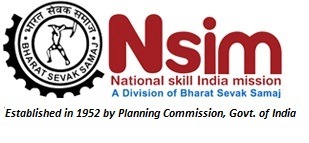Stories you may like
Strategies for Managing Access to Sensitive Data in Organizations
Security of sensitive data is one of the most paramount concerns that an organization should undertake in every field today. With the greater dependence on technology, today’s businesses have become more vulnerable to various risks like data breaches, unauthorized access, and insider threats.
Appropriately managed access to sensitive information protects the assets of a company, compliances according to industry regulations, and builds trust among clients. Effective management of access to sensitive data is one of the most important strategies in securing systems by any organization.
Implementing Role-Based Access Control
Role-Based Access Control (RBAC) is a widely adopted strategy for managing access to sensitive data. This approach assigns permissions based on the role a user has within an organization. Instead of giving employees blanket access to all data and resources, RBAC ensures that they only have access to the information necessary to perform their job functions.
By using this method, organizations can limit exposure to sensitive data and minimize the risk of accidental or malicious breaches. It also simplifies the process of managing permissions, as roles can be pre-defined with specific access levels. Regularly reviewing and updating these roles ensures that access remains relevant to the user’s current responsibilities, especially when there are changes in job roles or team structures.
Implementing RBAC also offers the benefit of scalability. As an organization grows, adding new employees or managing larger teams becomes easier without compromising data security. Defining clear access hierarchies ensures a streamlined process for both onboarding and offboarding employees, reducing potential security gaps.
Enforcing The Principle Of Least Privilege
A key component of a robust data security strategy is limiting access to sensitive information and systems through a strict permission structure. This approach minimizes the risk of unauthorized access and ensures that only those who absolutely need access to certain data can interact with it.
Key elements of this strategy include:
Granting Minimal Permissions: Users are only given access to the specific data and resources they need to perform their job functions. For example, an employee in the finance department should only have access to financial records, not customer service or HR data. This limits the exposure of sensitive information to only those who require it.
Temporary Access for Specific Tasks: In some cases, users may need elevated privileges for a limited time to complete a particular task or project. Once the task is finished, their access should be revoked. This ensures that high-level access isn’t left unnecessarily open, reducing the risk of internal data misuse or external attacks.
Layered Approach to Permissions: Privileged identity management (PIM) helps enforce this strategy by providing a centralized system for managing elevated access. PIM tools ensure that administrators and other users with high levels of privilege are monitored closely, with temporary or just-in-time access options to reduce risks. This layered approach helps protect critical systems from being accessed or modified unnecessarily.
Regular Review of Permissions: Implementing periodic reviews of user access ensures that outdated permissions are removed, and only active, relevant accounts retain privileges. This reduces security vulnerabilities caused by dormant or unnecessary high-privilege accounts, which can become entry points for attackers.
By enforcing this strategy, organizations reduce their attack surface, ensuring that sensitive data and critical systems are only accessible by authorized individuals for legitimate purposes. This helps prevent both internal mishandling and external cyberattacks.
Regular Audits And Access Reviews
Another key strategy for managing access to sensitive data is conducting regular audits and access reviews. These assessments help identify potential vulnerabilities and ensure that users only have access to the information they need. Over time, employees may change roles or leave the organization, leaving their access privileges outdated or unnecessary.
Regular audits involve examining who has access to which data, identifying any unnecessary permissions, and revoking or adjusting access as needed. This practice helps mitigate insider threats, whether intentional or accidental, by ensuring that only authorized personnel have access to sensitive information.
Access reviews should be a continuous process. Organizations can schedule these reviews quarterly or biannually to maintain a tight control over data access. Automated tools are available that can assist in conducting these reviews efficiently, flagging any discrepancies and potential security issues. Regular reviews ensure compliance with data protection regulations and maintain the integrity of the organization’s data security framework.
Using Multi-Factor Authentication
Multi-Factor Authentication (MFA) adds an additional layer of security to the process of accessing sensitive data. Instead of relying solely on passwords, which can be easily compromised, MFA requires users to provide multiple forms of authentication. These typically include something they know (a password), something they have (a mobile device or security token), and something they are (biometrics like fingerprints or facial recognition).
By implementing MFA, organizations can greatly reduce the likelihood of unauthorized access. Even if a password is compromised, the additional layers of verification make it more difficult for attackers to breach the system. MFA is especially critical for users with high levels of access, such as administrators or employees handling confidential information.
Many organizations are now adopting MFA as a standard security measure, particularly in industries that require strict compliance with data protection laws. Ensuring that MFA is applied consistently across the organization is an important step in safeguarding sensitive data.
Monitoring And Logging Data Access
To effectively manage access to sensitive data, organizations must also implement comprehensive monitoring and logging systems. These systems track all access attempts and user activities, creating a record of who accessed what data and when. By maintaining detailed logs, organizations can detect any suspicious activity or potential breaches in real time.
Monitoring access to sensitive data helps identify unusual patterns, such as repeated failed login attempts, access outside of normal working hours, or attempts to access restricted information. Once identified, security teams can take immediate action to investigate and prevent further unauthorized access.
Having a clear log of user activities also supports incident response efforts in the event of a data breach. By analyzing the logs, security teams can determine the scope of the breach and identify the compromised accounts or systems, allowing them to address the issue promptly and mitigate the damage.
Educating Employees On Data Security
While technology plays a major role in securing sensitive data, employees are equally important in maintaining data security. Educating employees on best practices for handling sensitive information, password management, and recognizing phishing attacks can significantly reduce the risk of data breaches caused by human error.
Regular training sessions on data security protocols help ensure that employees are aware of their responsibilities in protecting sensitive data. Employees should be encouraged to report any suspicious activity and be made aware of the potential consequences of not following security policies.
By fostering a culture of security awareness, organizations can strengthen their defenses against external and internal threats. When employees are knowledgeable about security measures





User's Comments
No comments there.